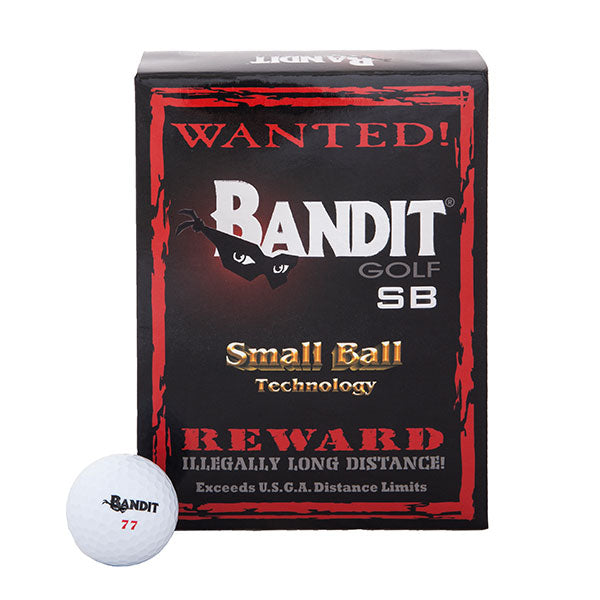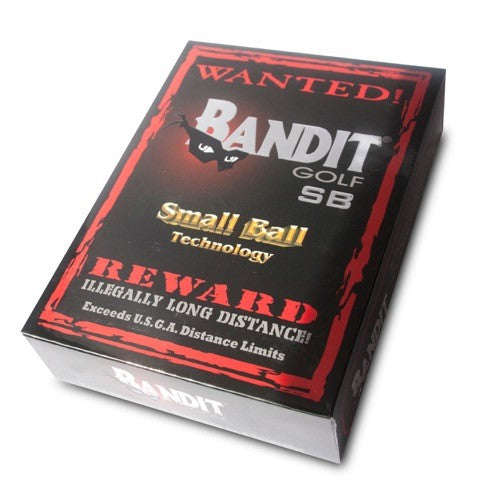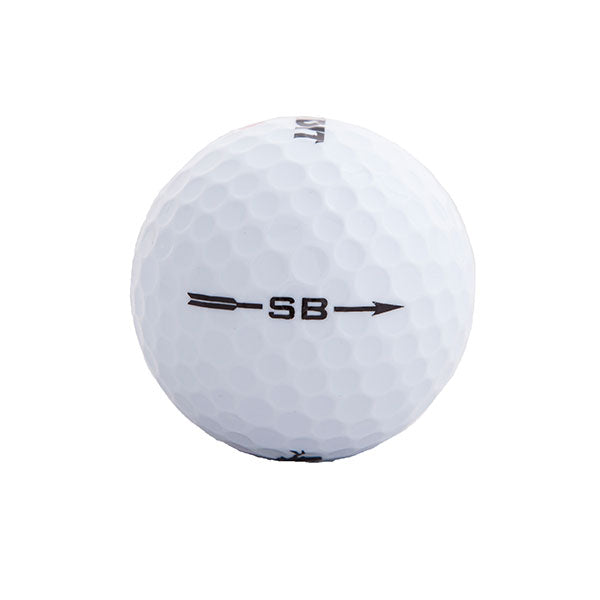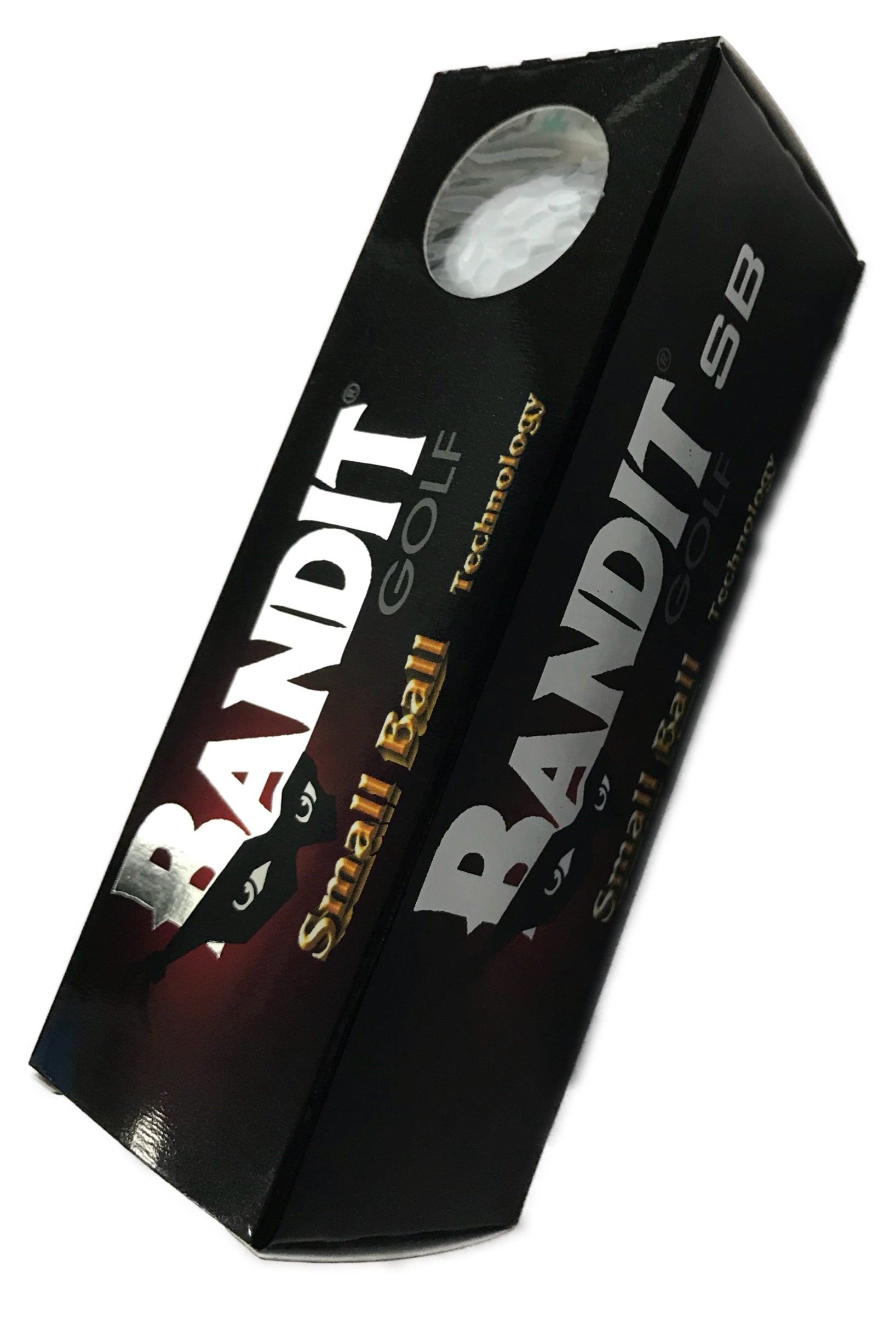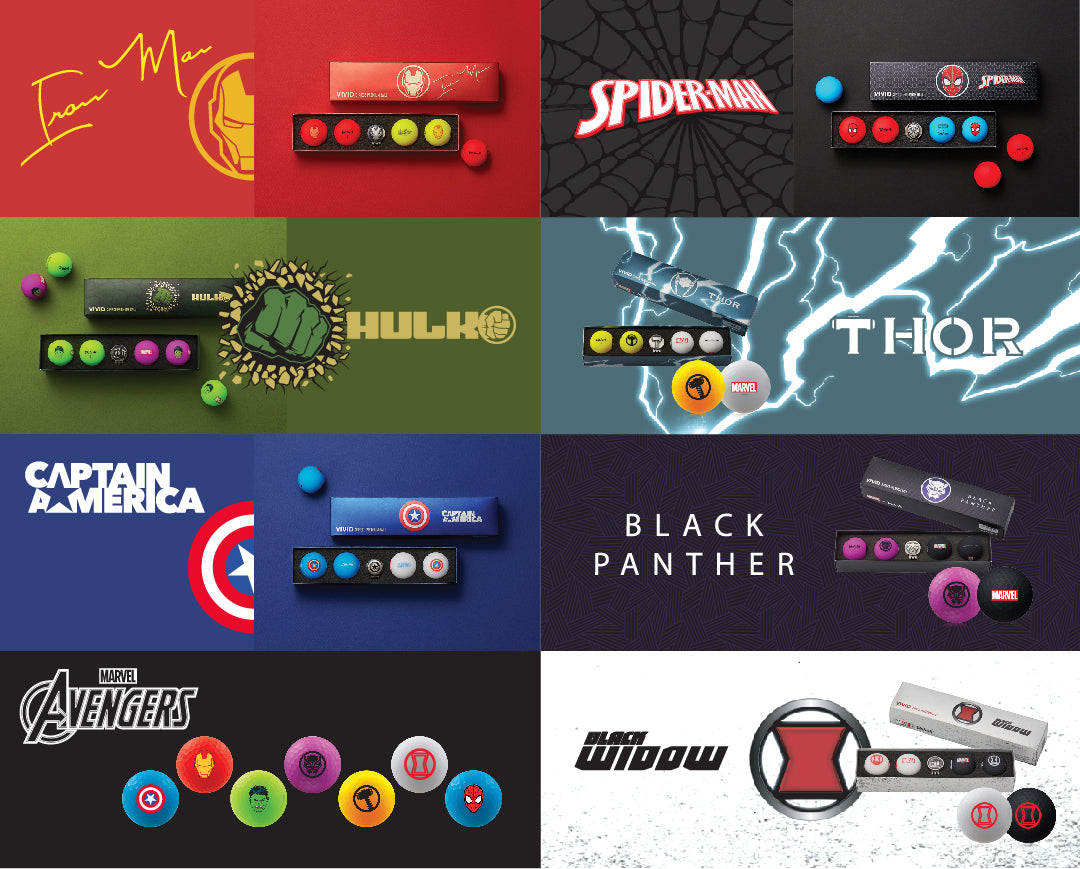Features & Benefits
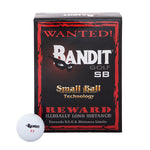
(12 Count Box)
The smaller USGA non-conforming 1.65” diameter Bandit SB golf ball creates a lower drag coefficient and less air resistance for extended flight time and increased distance. The design of the Bandit SB golf ball features an oversize Hi-C.O.R. core for maximum ball velocity at impact and improved feel and spin control. The smaller diameter, Hi-C.O.R. core formula, optimum gram weight and aerodynamic dual radius 338 dimple pattern produce the perfect combination for...MORE CARRY, MORE ROLL, AND MORE DISTANCE!
Trackman tests with the Bandit SB Golf Ball show an increase in distance of 7% to 10% Imagine yourself playing a 400-yard Par 4. If your normal drive is 250 yards you know have 150 yards left to the green and will probably be hitting anywhere from a 5 to 7 iron. Now play the same hole with a Bandit Golf Ball! Your tee shot is approximately 275 yards and you only have 125 yards left to the green. Using the Bandit golf ball you will be hitting a 9 iron or Pitching Wedge!
Distance is Not the Only Benefit! The Putting Cup Just Got Bigger!
The smaller diameter of the Bandit Golf Ball allows you to make more putts! Some of those putts that rolled around the cup and lip out are now going to drop!
More Distance and Improved Putting=Lower Scores
Bandit Golf products are designed and engineered to Exceed the Rules of Golf and provide Golfers with Tour Quality Productsthat DO NOT Conform with USGA or R&A Rules.
We offer a Great Selection of the Highest Quality Game Improvement Products Designed to Make the Great Game of Golf More Fun and Enjoyable!
WARNING: Bandit Golf Products DO NOT appear on any USGA or R & A Conforming Product Lists.
Side Pole Alignment
Bandit SB Golf Balls feature an imprinted Side Pole Alignment arrow for more accurate putting.
Double Digit Numerical Marking System
Bandit SB Golf Balls use a double digit numerical marking system. Each dozen contains a 3 Ball sleeve of each #55, 66, 77, 88
Small Ball History
Up until 1990, golf’s governing bodies, the USGA and R&A, could not agree on the size of the golf ball. There were two different sizes of golf balls being used in competitions around the world. The USGA’s minimum golf ball diameter was 1.68 inches, while the R&A’s minimum golf ball diameter was 1.62 inches.
The larger ball played in USGA-governed areas became known as the “American Ball”. The smaller ball known as the “Small Ball” or “British Ball” was an option for golfers playing under R&A rules. Although the difference in size sounds minimal it had a significant impact on the flight of the ball with the smaller version flying farther and straighter than the larger version. As proof, American golfers almost unanimously switched to the smaller British ball when playing in international competitions governed by R & A rules like the British Open or Open Championship and the Ryder Cup.
The small Wilson Staff, “British Ball” used by Palmer to win the 1961 Open at Royal Birkdale is on display at the World Golf Hall of Fame. In an interview with Jack Nicklaus at the 2017 Memorial Tournament he said, “The small ball back then was probably about the length of the golf ball we have today. We hit it about 50 yards further.” In 1974, the R&A announced they made the larger 1.68” ball mandatory in the Open Championship.
However, it was not until Jan. 1, 1990, that the Rules of Golf were updated and the USGA and R&A settled on an approved minimum size of 1.68” diameter. The “Small Ball” or “British Ball” was officially outlawed and relegated to history.
http://www.worldgolfhalloffame.org/media-center/news-articles/arnold-palmer-british-ball
March 2017 article by Sports Journalist Brent Kelley
https://www.thoughtco.com/british-ball-1564084
May 2017 article by Jamie Wallace of the USGA
Whether you are looking for the latest and greatest or the equipment the pros played last year for half the price we've got a great selection for you! Manufactures closeout, store closings, demo-days equipment, or just-ins... what ever the scenario, we look high and low to find great deals on golf equipment of all kinds!

Rogers, AR 72756
Directions: From I-540 take Exit 85 and head east on W. Walnut St. for 2.2 miles. We are located on the far east exterior of the mall facing Dixieland Road behind the Arvest Bank.
Not what you expected? Sizing or color not what you are looking for? No problem, we accept returns for any reason! There are a few ground rules though that we ask you to follow, here they are:
1. Please request a return authorization prior to returning your item. We like a good surprise as much as the next person, but this helps us to process your refund quicker... and everyone likes to get their money fast, right?
2. Items must be returned within 30 days of delivery.
3. New items must be returned in new, unused, condition in original packaging with tags where applicable. (Returns of items returned in used condition that are accepted may be reduced by up to 50%, damaged items or items with obvious signs of use may not be accepted at all, if in doubt contact us before you mail it!)
4. Items returned that received free shipping when purchased are subject to a restocking fee in the amount of the original shipping.
You may ship your return via the carrier and method of your choice to:
CaddiesShack.com / Attn: Return100 N. Dixieland Road
Unit F2
Rogers, AR 72756
Frequently Asked Questions
How do I become a golf professional?
How do I become a golf professional?
To become a club professional or teaching professional it will cost some money, take some time and require you to apply yourself, just like any other career path
What do you need to start playing golf?
What do you need to start playing golf?
To get started as a beginner golfer, you’ll need golf clubs, balls, and tees, as well as a bag to store the equipment in. You’ll also need golf shoes that won’t damage the course, appropriate golf clothing depending on the weather, a towel for cleaning your clubs, and a divot repair tool.
What should you wear when golfing?
What should you wear when golfing?
While there isn't a strict dress code at all golf courses, it's generally recommended to wear collared shirts, slacks or shorts, and golf-specific shoes or athletic shoes. Breathable, moisture-wicking clothing is recommended to help keep you cool and comfortable while out on the course. A hat is also wise to wear to help keep UV rays off your skin.
How do you aim a golf ball?
How do you aim a golf ball?
Aiming a golf ball involves aligning yourself and the clubface in relation to your intended target. The proper stance and grip are instrumental in correctly aiming the golf ball. Practice aligning yourself and the clubface during your practice sessions to develop a reliable sense of aim.

